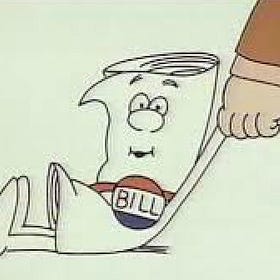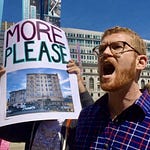We had the opportunity to chat with Joshua Coven, an Assistant Professor of Real Estate at Baruch College, Zicklin School of Business. Joshua graduated with a PhD in Finance from NYU Stern in May 2025, and he is an emerging expert on real estate, urban economics, household finance, and industrial organization.
His job market paper (JMP) from his PhD — The Impact of Institutional Investors on Homeownership and Neighborhood Access — can be found here. Joshua also previously co-authored a paper on property taxes with his former professor and advisor at NYU, Arpit Gupta, who we were pleased to interview last week!
Opening the Door: Introducing Institutional Impacts (00:00:00 - 00:01:14)
The discussion kicks off with a nod to research on how institutional investors affect homeownership and neighborhood access, sparked by a Substack post.
Prior studies like Barbieri and Dobbles reveal that institutional acquisitions boost renter welfare by about $2,800 annually, cutting rents by 2.3% through increased supply offsetting concentration effects.
Higher institutional concentration pushes rents up by 3.8%, but expanded rental supply counters this with a 6.1% drop.
The conversation sets the stage by comparing mom-and-pop landlords to institutions, focusing on unit ownership scale.
Scale and Scope: Landlord Distinctions Defined (00:01:23 - 00:02:09)
Single-family rentals remain largely under small landlords, with 75% managed by those owning fewer than five units and half by single-unit owners.
Institutions, like Invitation Homes and American Homes for Rent, stand out as larger, newer players with over 1,000 units each.
These big operators are identified by size and focus, contrasting the historical dominance of smaller, individual landlords.
Trade-Offs Unveiled: Entry Effects on Markets (00:02:17 - 00:04:47)
Institutional entry into single-family rentals creates a balance: lower rents from boosted supply, but reduced homeownership, though less severely.
In high-concentration markets, institutions drive 21% of price hikes, yet supply responses mitigate broader impacts.
Market power exists but is offset by economies of scale; “they increase the supply by a significant amount.”
Unlike other views emphasizing vacancy, here high occupancy (96-99%) suggests market distortion via purchase choices rather than withholding units.
Institutions adjust holdings dynamically, shrinking in weak markets and stabilizing in strong ones.
Occupancy Realities: Why Units Stay Filled (00:04:51 - 00:05:52)
High holding costs like taxes, debt, and insurance make vacancies unprofitable, pushing institutions toward full occupancy.
In targeted markets, they wield influence but opt against vacancies, favoring sales to homeowners or small landlords if needed.
This contrasts multifamily dynamics, where tweaking unit counts is tougher.
Policy Simulations: Banning the Big Players (00:06:04 - 00:08:38)
Banning institutions would hike rents by shrinking rental supply, as they select growth areas with population and job surges plus inelastic supply.
Their entry expands rentals due to lower costs than small landlords, flipping the script on rent correlations.
In alternate scenarios, rents could rise if institutions crowd out more small landlords than they add units, but data shows the opposite.
To invert effects, they’d need to drastically inflate small landlord costs, which isn’t observed.
Supply Surge Secrets: Institutional Advantages (00:08:46 - 00:10:45)
Institutions target repair-needy homes costing around $20,000 to fix, leveraging capital access and legal prowess for conversions.
Economies of scale shine in bargaining for materials and insurance, yielding lower costs.
Selection into low-elasticity areas stems from avoiding supply dilution by competitors, evolving over time.
Shifting Strategies: From Buying to Building (00:10:50 - 00:13:32)
Institutions have been net sellers for six quarters, pivoting to build-to-rent for vertical integration and higher margins.
Building proves cheaper than buying and operating, with “margins a few percentage points larger.”
This model reduces homeownership impacts by avoiding occupied home purchases, though it may redirect new builds toward rentals.
Rate sensitivity and yield focus play roles, but cost efficiencies dominate the shift.
Long-Term Fears: Monopsony Risks Assessed (00:13:37 - 00:14:37)
Short-run efficiencies don’t foreshadow long-term dominance, given low barriers for small landlords to enter.
Unlike high-barrier industries, anyone with capital can compete as a landlord.
Regulatory changes could alter this, but current dynamics show no such push.
Policy Pathways: Beyond Bans and Blame (00:14:40 - 00:17:14)
Bans overlook how institutions boost neighborhood access for renters, though they dip homeownership slightly.
Focus should shift to easing building via shorter approvals and permits, benefiting all.
Filtering from new market-rate supply aids affordability indirectly.
General building encouragement trumps targeting investors, fostering ownership and rental choices.
Diverse Dwellings: Envisioning Healthy Markets (00:17:16 - 00:20:51)
A robust market avoids uniformity, addressing shortages in housing types beyond sheer volume.
Institutions expand choices by adding rentals in ownership-heavy suburbs, aiding those unable to buy.
Build-to-rent communities may fill “missing middle” gaps, with clustered typologies cutting maintenance costs.
Government could incentivize variety if needed, but developers often adapt for profit.
Finance in Focus: Housing as Asset Explored (00:20:52 - 00:24:07)
Professionalization via financialization yields efficiencies, expanding single-family rentals.
Securitization fueled risky lending in the crisis, but here it boosts supply positively.
Viewing housing as yield-bearing enables rentals; zero yield would eliminate that option.
Everyday access through REITs democratizes investment, mirroring institutional opportunities.
Winners and Losers: Distributional Dynamics (00:24:10 - 00:26:28)
Renters, especially middle-income, gain neighborhood access; homeowners on the margins face hurdles from price rises.
Effects hit lower-end buyers hardest, yet overall homeownership drop is modest—0.2 fewer owners per institutional purchase due to small landlord crowd-out.
Post-crisis distress amplified early impacts, beyond current price-driven changes.
Revelations and Realities: Research Surprises (00:26:31 - 00:29:02)
Initial expectations of rent hikes from market power flipped; efficiency and low vacancy drive supply growth instead.
Selection into appreciating areas explains price correlations, aligning with studies showing minor price upticks and rent dips.
Public perception lags, often viewing institutions negatively despite evidence.
Taxing Truths: Property Levies Reexamined (00:29:04 - 00:33:01)
Higher property taxes aid newcomers by lowering down payments, benefiting high-income, low-wealth buyers.
Incumbents bear flow costs, dropping values; “a higher property tax bill is bad for them.”
Asymmetry favors vocal incumbents over potential entrants, mirroring development debates.
Reforms like deferred payments could ease shocks, but political will remains low under Prop 13 constraints.
Demand Horizons: Peaking Populations Probed (00:33:02 - 00:36:43)
Shrinking households and immigration may signal peak demand, but preferences for larger spaces could counter.
Past predictions faltered; building pivot by institutions ties more to efficiencies than demand drops.
Japanese-style markets are plausible but unpredictable amid evolving needs.
Tax Ideals: Optimal Structures Imagined (00:36:46 - 00:38:37)
Land value taxes outperform property taxes by not deterring development.
Self-assessed taxes intrigue but risk volatility and disruption.
Split taxes blending land and property warrant exploration for efficient land use.
Priority Pyramid: Crisis Drivers Ranked (00:38:58 - 00:41:30)
Supply restrictions from regulations top the list, with approvals eating 37% of development time in LA.
Cutting delays by 25% could boost production 11-33%.
Institutional investors rank low; rate locks exacerbate but supply elasticity underlies all.
Inelastic supply amplifies distortions, hindering market adjustments.
Breaking Barriers: Tackling Supply Stiflers (00:41:33 - 00:43:25)
Endogenous regulations preserve values for stakeholders, creating supermajorities against change.
Reducing local vetoes, like NYC’s council overrides, balances control with broader benefits.
Centralizing some decisions internalizes regional spillovers from underbuilding.
Upzoning Unpacked: Land Value and Rent Ripples (00:43:32 - 00:47:48)
Upzoning spikes land values by unlocking multifamily potential, but this reflects utility, not rent hikes.
Sales to developers occur at equilibrium prices tied to achievable rents, without direct pass-through.
Immediate rent effects muted by excess demand and inflows; more supply enhances responsiveness long-term.
Filtering spreads benefits, allowing more to live desirably.
Hidden Hurdles: Statutory vs. Informal Constraints (00:47:57 - 00:49:40)
Measures often capture laws but miss participatory vetoes, like council compositions shutting projects.
Both formal and informal bind equally; neighborhood defenders highlight community pushback.
Deeper studies needed to weigh which dominates.
Future Frontiers: Emerging Research Teased (00:49:43 - 00:51:19)
Exploring sell-off risks if large owners face shocks, or how common ownership links distant markets.
Climate resilience favors diversified institutions via low capital costs and insurer bargaining.
Larger landlords may better handle risks, reshaping volatility in prices and rents.
Thank you!
…to Joshua and everyone who tuned in live.
Join us for our next Substack Live on Tuesday 10/28 at 1pm ET with Jess Remington, a Research Analyst at Economic Innovation Group which is a bipartisan public policy organization dedicated to forging a more dynamic and inclusive American economy. Jess has done some wonderful work on urban densification — check out her article titled “Not Just Suburban Sprawl — Dense Places Can Still Build”.
As a reminder…
If you or someone you know is interested in competing in the Boyd Essay Contest for a chance at $2,500 cash and a Boyd fellowship, the submission window is open through the end of October. There is exactly one week left at the time of this writing! Details here:
Boyd Essay Contest: Call for Submissions
We’re looking for essays that answer one simple question: What’s an actionable, outside-the-box solution to America’s housing crisis?
And some more context here:
The Next Big Pro-Housing Bill Could Have Substack Origins
This is a chance to speak truth into the world. Take it!



















